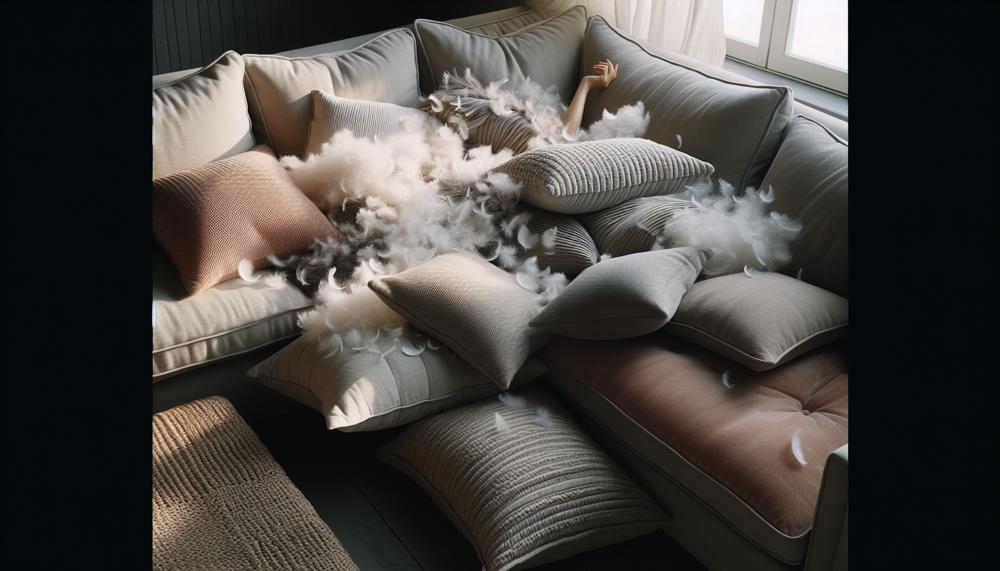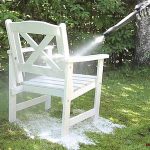Are you tired of sinking into your couch cushions and feeling like you’re sitting on a deflated balloon? We have the solution to your cushion woes.
In this blog post, we’ll be sharing our tried and tested methods for fluffing attached sofa cushions.
With just a few simple steps, you can restore your couch to its former plumpness and comfort.
Trust us, it will thank you with endless hours of cozy lounging.
Contents
Methods to Refluff Couch Cushions
As passionate admirers of home decor, we are all familiar with the never-ending struggle of maintaining the fluffiness and freshness of our beloved couch cushions.
Over time, these cushions can become flat and uncomfortable, making it nearly impossible to relax and unwind after a long day.
But do not despair, as refluffing your couch cushions is not as daunting a task as it may seem.
Here are some simple yet effective methods to help you easily refluff your couch cushions at home.
Employ the Power of Tennis Balls:
Surprising as it may sound, but tennis balls can be your secret weapon when it comes to refluffing your couch cushions. By cutting a small hole in a tennis ball and inserting it into the cushion, you can achieve miraculous results.
The bouncing motion of the tennis ball helps redistribute the stuffing inside, giving your cushion a new lease on life.
Add Extra Padding:
If your cushions are looking flat and worn out, it may be time to add some extra padding. You can use various materials such as new foam, old pillows, blankets, or towels to add more volume to your cushions.
Simply remove the cover, stuff in the filling of your choice, and then sew or zip the cover closed. This will not only make your cushions look fuller but also provide extra comfort.
Revamp and Reupholster:
For a complete transformation, consider refurbishing and reupholstering your couch cushions. This involves removing the old stuffing and adding new polyester fiberfill to give your couch a whole new look.
While this method may require a bit more effort and cost, the end result is worth it for a fresh and fluffy couch.
Flip and Fluff:
Sometimes, all you need to do is flip over your cushions and press them back into shape by hand or with a vacuum cleaner on low heat.
This helps redistribute the stuffing inside and prevents your cushions from becoming flat again.
Refluffing Couch Cushions That Are Attached
Are your couch cushions looking deflated and squished? Do you constantly fiddle with them, trying to get comfortable?
Over time, attached couch cushions can lose their shape and support, leaving us with less-than-ideal seating arrangements.

There are simple and effective ways to revive them at home without breaking the bank. Let’s delve in and discover how you can easily refluff attached couch cushions.
Vigorously Pat or Beat
The first step in refluffing attached couch cushions is to remove any detachable cushions and focus on the attached ones. Give them a good pat or beat them vigorously with your hands to loosen up and redistribute the filling inside.
This method may require some time and effort, but it’s a great way to quickly bring some life back into your flat cushions.
Utilize Tennis Balls
Tennis balls are not just for sports – they can also be a useful tool for refluffing couch cushions. Simply place a few inside the cushion cover and run it through a cycle in the dryer.
The tumbling motion of the dryer, combined with the pressure from the tennis balls, will help break up clumps and fluff up the filling.
Replace the Foam
If your couch cushions are beyond repair, it may be time to replace the foam inside. This option may require a larger upfront cost, but it will provide long-term comfort and support. You can purchase foam inserts in various shapes and sizes from most craft stores or online.
Be sure to measure your cushion covers before buying to ensure you get the right size.
Add Extra Padding
Another way to refluff your attached couch cushions is to add extra padding.
You can use cotton batting, pillow stuffing, or even repurpose old blankets or clothes.
How to Prevent Couch Cushion Sagging
Couch cushion sagging is a perplexing predicament that many homeowners encounter. However, fear not, as this issue is far from insurmountable.
I have amassed valuable insights and put various techniques to the test in order to prevent couch cushion sagging like a pro.
Here, I will share my expert tips and tricks that will leave your couch looking and feeling brand new. So, let’s delve into it.
Flip and Fluff Regularly
One of the most effective methods to prevent cushion sagging is to regularly flip and fluff them.
By simply flipping the cushions over and manually pressing them back into shape or using a vacuum cleaner on low heat, you can redistribute the stuffing and prevent excessive wear in one spot.
Utilize Jute Webbing
For an extra reinforcement against sagging, consider using jute webbing. This sturdy material evenly redistributes weight on your couch cushions.
Simply measure, cut, staple, and fluff up new jute webbing under the cushions for added support.
Add Extra Stuffing
If your cushions have lost their burstiness, adding extra stuffing can do wonders. You can use old pillows, blankets, or towels to stuff under the cover.
Sew or zip the cover closed for a quick fix that will revive the fluffiness of your cushions.
Refurbish and Reupholster
For a more drastic solution, consider refurbishing and reupholstering your couch cushions.
By removing the old stuffing and replacing it with new polyester fiberfill, you can give your couch a whole new look while preventing sagging.
Employ Anti-Sag Supports
Designed specifically for added reinforcement, anti-sag supports are a great tool in preventing cushion sagging.
Simply place them under the cushions and enjoy a sturdy and comfortable couch.
Conclusion
In conclusion, maintaining the fluffiness and comfort of attached sofa cushions may seem like a daunting task.
But fear not, with the right techniques and materials, it can be easily achieved. Regularly flipping and fluffing your cushions is key to preventing them from becoming flat and uncomfortable.
Adding tennis balls or extra padding can also help revive their plumpness. For a more long-term solution, consider incorporating plywood and high-density foam into your cushion maintenance routine for added support and shape preservation.
Don’t let sagging cushions ruin your lounging experience. Follow these tried and tested methods to keep them looking and feeling brand new.
Your couch will thank you with endless hours of cozy relaxation.





